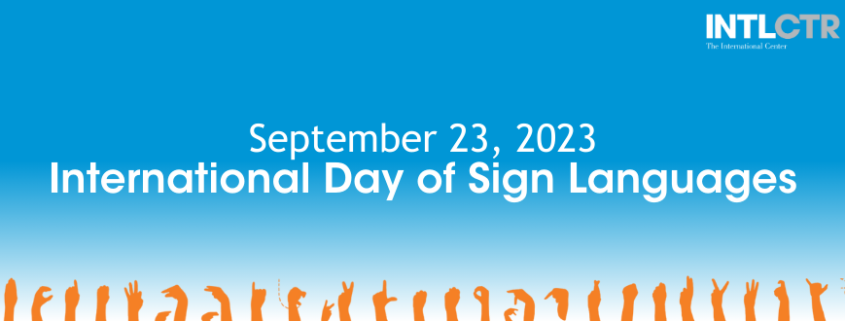INTERNATIONAL DAY OF SIGN LANGUAGES 2023
September 23rd is The International Day of Sign Languages, a day that celebrates the culturally diverse global Deaf community and their various unique linguistic identities.
Sign languages are systems of communication which use various gestures and movements to communicate. Signed languages have been around for as long as Deaf people have been around, which is to say since the dawn of humankind.
An estimated 70 million people worldwide are deaf. By now you may be wondering, why is this so significant? Let’s delve into it.
Is it Universal?
Yes and no. It’s a common misconception that a single sign language is used by all deaf people to communicate. In fact, there are 130 sign languages listed in just the Ethnologue database. Roughly 300 distinct signed languages exist across the globe.
In the 1920s, at an international sport gathering now known as the Deaflympics, International Sign Language was developed. The World Deaf Federation standardized this system as “Gestuno” in the 1970s.
Esperanto was an attempt at a universal means of communication. Unfortunately, the language did not spread as it was intended and is now spoken by only 1000,000 people around the world as is sometimes International Sign Language.
Culture is shaped by language and vice versa. Each language has its etymology linking it to other languages. Our world is simply too diverse and vast to adopt and properly develop a universal language.
History and Global Impact
Even though roughly 450,000 people use American Sign Language (ASL). across the US and Canada, it’s not the most globally prevalent sign language. Above it ranks Indo-Pakistani, Indonesian, Russian, Brazilian, Spanish, and Egyptian sign languages.
American Sign Language is derived mostly from LSF (French Sign) and Hank Talk (an Indigenous method of communication). The American School for the Deaf was established in 1817 and was the first in the country. There, ASL was standardized and slowly became the American Sign Language we know today.
Unfortunately, progress in the signing world of North America was not linear. In the 1860s, oralist leaders spread the damaging belief that sign language stunted the growth of Deaf children. Over the next sixty years, children were forced to learn to speak and lipread. Their hands were tied behind their backs to keep them from signing. Finally, in 1965, sign language was finally recognized as integral to deaf education.
This pattern of audism regarding Deaf individuals is not unique to the US. Around 80% of the global deaf population live in developing countries. There, sign language is often oppressed consequently decreasing deaf access to education and the fulfillment of human rights.
It is also important to recognize the intersection between racism and audism throughout history. A school for Deaf Black children was created in the 1850s. Before then, Deaf Black families had their own home sign. A significant cultural and linguistic divide grew from this segregation. It was not until 1952 that Black students were allowed to attend Gallaudet, the world’s only university specifically designed for the education of Deaf and Hard of Hearing students. Consequently, Black American Sign Language is distinct from “regular” ASL.
All sign languages are important, unique, and beautiful. To celebrate, you can support a local Deaf-owned business or even learn a few signs from the resources below!
- ASL and ASL YouTube
- Why you should only learn from deaf teachers
- BSL
- LSF
- Japanese Sign
- More countries’ signs
- Deaf Culture
- How to communicate without knowing sign
- Last year’s blog
- Pro-tactile sign deaf/blind individuals
- Deaf v deaf- what’s the difference?
By: Amelie Zirnheld, Marketing & Communications Intern

